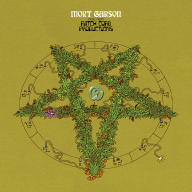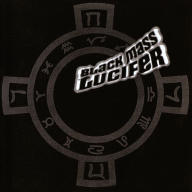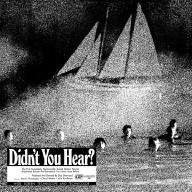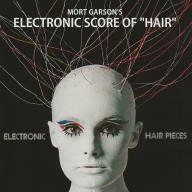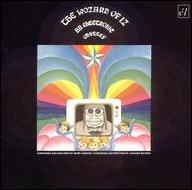The son of two Russian Jewish refugees, Mort Garson was born in 1924 in the Canadian city of St. John, New Brunswick, but raised across the border in New York City. He started playing the piano at age 11, ultimately earning a scholarship to study composition at the Juilliard School of Music. Before he was drafted to serve in World War II, Garson briefly graduated to the ranks of professional pianist and arranger; when he returned from duty, he cemented a reputation as a top session hand who could arrange, conduct, or compose music as needed. Some of Garson's early credits included Brenda Lee's 1957 single "Dynamite" and Cliff Richards' 1961 hit "Theme for a Dream," both of which he co-wrote.
Garson's first big success arrived in 1963, when he collaborated with lyricist Bob Hilliard on Ruby the Romantics' lovely "Our Day Will Come," a chart-topping hit that sold over a million copies. In the wake of the song's popularity, Garson, his wife Margaret, and their two children moved to Los Angeles so he could capitalize on the opportunity. As an arranger and accompanist, some of his most notable work includes Doris Day's 1965 albums Sentimental Journey and Latin for Lovers and Mel Tormé's 1966 album Right Now!. Garson also arranged that year's hit for the Sandpipers, "Guantanamera," and in 1968, he experienced his crowning moment of commercial glory as the string arranger behind the Glen Campbell blockbuster "By the Time I Get to Phoenix." During this time, he also arranged and conducted a series of easy listening records in the mold of Les Baxter, among them the Continentals' Bossa Nova for All Ages, the Total Eclipse's Symphony for the Soul, and Dusk 'Til Dawn Orchestra's Sea Drift. With Perry Botkin, Jr., Garson arranged and conducted a number of easy listening records inspired by the era's biggest pop hits, among them two volumes in the Hollyridge Strings' Best of the Beatles Songbook series and also their Play the Hits of Simon Garfunkel.
While he was becoming an easy listening and pop maestro, Garson also explored the wilder side of his creativity. When he attended the Audio Engineering Society's West Coast convention in 1967, he met Robert Moog, inventor of the legendary Moog modular synthesizer, and bought one for his studio soon afterward. At $15,000 in 1967 dollars, it was a serious investment, and Garson focused his projects around the instrument. Not only did he create jingles and sound effects for TV commercials with the synthesizer, the Moog sparked a new phase of his career. May 1967's The Zodiac: Cosmic Sounds, a set of instrumental and spoken-word tracks inspired by the 12 astrological signs, became the first album recorded on the West Coast with a Moog. Robert Moog attended the album's recording sessions, which included contributions from electronic pioneer Paul Beaver, spoken-word artist Jacques Wilson, and folk singer Cyrus Faryar, as well as drummer Hal Blaine, keyboardist Mike Melvoin, and other well-known session musicians. A commercial success (and also cited by the Moody Blues' Justin Hayward as an influence on the band's album Days of Future Passed), The Zodiac: Cosmic Sounds spawned the 12-volume Signs of the Zodiac series, with one record for each astrological sign. A year later, Garson and Wilson reunited for the Bernie Krause-produced The Wozard of Iz: An Electronic Odyssey, a hallucinatory psychedelic satire of the L. Frank Baum children's classic featuring featuring vocalist Suzi Jane Hokom as Dorothy.
In 1969, Garson's career as an electronic music pioneer reflected some of the year's most significant moments in pop culture and world history. For AM, he recorded Electronic Hair Pieces, a set of electronic renditions of songs from the hit musical Hair. Meanwhile, CBS hired Garson to write music to accompany their television coverage of that July's moon landing. His six-and-a-half minute score for the monumental event incorporated hints of jazz and psychedelic music as performed on the Moog. Two years later, Garson developed the occult themes of his earlier albums on Black Mass/Lucifer, an intense instrumental concept record drawing upon themes and images central to Satanist mythos. Also in 1971, Garson teamed with performance artist Z for the aural aphrodisiac Music for Sensuous Lovers. He then spent several years working on scoring projects that included 1972's Larry Hagman-directed film Son of Blob; 1974's Grammy-winning children's album The Little Prince, which paired Garson's score with narration by Richard Burton; and Mel Brooks and Carl Reiner's 1975 animated television special The 2000 Year Old Man. He returned to record stores in 1975 with another occult-themed effort, The Unexplained: Ataxaria, a set of instrumentals made to accompany listeners' meditations. The following year, Garson issued one of his most beloved albums, Mother Earth's Plantasia. Intended as a companion piece to the 1973 book The Secret Life of Plants (which was also turned into a documentary that featured a soundtrack by Stevie Wonder) and inspired by his wife's house plants, the album was initially available only if someone purchased a plant from Los Angeles' Mother Earth Plant Boutique or a Simmons mattress from Sears.
The "warm earth music for plants…and the people that love them" of Mother Earth's Plantasia showcased a different side of Garson's Moog innovations, but it ended up being his final album. As the '70s became the '80s, Garson used his synth to create music for the TV game shows of Heatter-Quigley Productions, which included Gambit, Runaround, and The Magnificent Marble Machine. He also wrote the music for Marilyn!, a 1983 West End musical about Marilyn Monroe that reunited him with Jacques Wilson, who penned the show's lyrics. Following the death of his eldest son in 1984, Garson and his family moved to France for several years. While abroad, he scored a pair of action films, 1985's Amazon and 1987's Vultures. When the family returned to the States, they settled in San Francisco, a city Garson fell in love with during the Plantasia days. Though his credited work became fewer and further between, Garson's legacy was already beginning to grow. His music appeared in the 1994 short film Arrowhead, and DJ Shadow sampled "Planetary Motivations (Cancer)" for a song on his 1996 debut album Endtroducing…… In 2002, Garson composed the score for the musical When Garbo Talks, which featured a book and lyrics by his longtime friend Buddy Kaye. The show premiered in 2010, two years after Garson died from renal failure at age 83 in a San Francisco hospital.
Until his death, Garson continued to write daily, leaving unfinished projects that included an orchestral piece about the neighborhoods of San Francisco. Meanwhile, his reputation as an underappreciated synth pioneer gained momentum in the 2000s and 2010s. Thanks to intrepid thrift store shoppers rediscovering Garson's output and sharing it online, the cult status of albums such as The Unexplained: Ataxaria and especially Mother Earth's Plantasia was solidified. Projects such as the HBO series High Maintenance, the documentary Lil Bub & Friendz and the podcast The Adventure Zone featured Garson's music, and by the late 2010s, copies of his albums sold for hundreds of dollars. In 2018, Rubellan Remasters reissued Black Mass/Lucifer and The Unexplained: Ataxaria. The following year, Sacred Bones -- whose founder, Caleb Braaten, first fell in love with Garson's music at the Denver record store where he worked in the early 2000s -- kicked off a reissue campaign with Mother Earth's Plantasia. The label's archival releases continued in late 2020 with deluxe remastered editions of Black Mass/Lucifer and The Unexplained: Ataxaria and also included the rarities collection Music from Patch Cord Productions and Didn't You Hear?, the soundtrack to a 1970 experimental film featuring one of Gary Busey's first screen appearances. ~ Heather Phares & Jason Ankeny, Rovi



